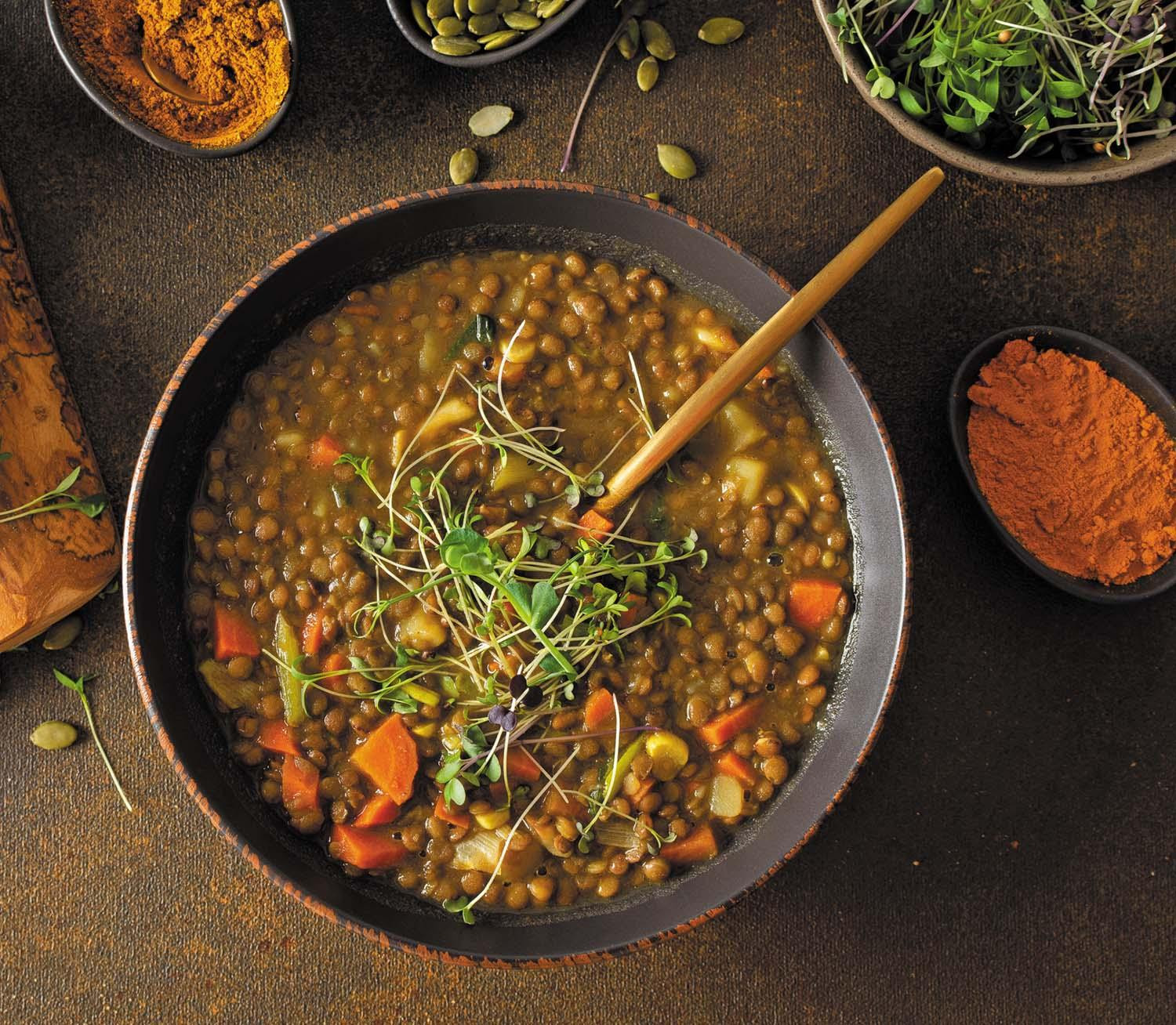An Indian adaptation of the Mediterranean diet
Heart-healthy Indian meals highlight legumes, vegetables, and the abundant array of spices common in this cuisine.
- Reviewed by Christopher P. Cannon, MD, Editor in Chief, Harvard Heart Letter; Editorial Advisory Board Member, Harvard Health Publishing

What happens when you combine the foundation of the heart-protecting Mediterranean diet with the vibrant spices and vegetarian-friendly aspects of Indian cuisine? You get an array of flavorful dishes packed with fiber and anti-inflammatory compounds that may also provide health benefits.
That’s according to a small study published Aug. 21, 2025, in the Journal of Clinical Lipidology looking at the feasibility of this approach for people with heart disease. Following a Mediterranean eating pattern (which emphasizes healthy fats and plant foods common in Mediterranean countries) is a proven strategy for reducing the risk of heart disease. Researchers swapped in foods common to Northern India to create an Indian-adapted Mediterranean diet, which they then tested in 53 people recruited from a cardiology clinic in New Delhi. After three months on the diet, the participants (most of whom found the diet “easy to follow”) had modest improvements in body mass index, blood sugar, and leptin levels. (Produced by fat cells, leptin can trigger inflammation — an outpouring of harmful substances in the bloodstream that’s a known contributor to heart disease.)
An anti-inflammatory diet
As the study authors note, their Indian-adapted Mediterranean diet has the lowest Dietary Inflammatory Index score ever reported in a scientific study. This score — which is based on 45 dietary factors such as vitamins, minerals, and other beneficial compounds — reflects a diet’s inflammatory potential. Anti-inflammatory foods like vegetables, fruits, whole grains, and healthy oils have lower scores, while pro-inflammatory foods (rich in sugar, unhealthy fats, and red and processed meat) have higher scores. “Indian cuisine varies widely by region, but there are aspects of a heart-healthy diet commonly found throughout the country,” says Dr. Uma Naidoo, director of nutritional, lifestyle, and metabolic psychiatry at Harvard-affiliated Massachusetts General Hospital. These include red meat in moderation but plenty of legumes, along with a variety of inflammation-fighting foods, such as fruits, vegetables, and spices.
Interested? Try incorporating some of the following ingredients and approaches into your own meals.
Protein. About 40% of people in India are vegetarian; those who do eat animal protein often choose chicken or fish, as many people avoid beef and pork for religious reasons. Legumes, which are low in fat but high in fiber, are popular sources of protein. Recipes featured in the study menus include chana masala (chickpeas in a tomato-based sauce) and dal (a soupy stew made from dried split lentils or peas). Paneer, a fresh, mild-flavored cheese, is another protein source used in curries and other dishes.
Carbohydrates. Although white basmati rice is common in India, the study used brown rice and other whole grains, including millet, barley, and buckwheat. Flat breads (known as roti and chapati) were prepared with whole-wheat instead of white flour.
Healthy fats. In some regions of India, traditional cuisine includes either ghee (clarified butter) or coconut oil, both of which contain high amounts of saturated fats. The study participants, however, used more-healthful peanut oil or mustard oil, which are also commonly available in India. When Dr. Naidoo makes Indian food at home, she uses either extra-virgin olive oil or avocado oil and adds ghee sparingly for extra flavor.
Vegetables. Tomatoes, eggplant, and peppers appear often in both the Mediterranean diet and the Indian-adapted version, as do leafy greens such as spinach. The study diet also included greens native to northern India, including fenugreek leaves and radish leaves. In the United States (especially in southern states), collard greens are a similarly healthy option, Dr. Naidoo says.
Fruits. In addition to oranges and bananas, fruits commonly eaten in India include tropical fruits such as mangoes, papayas, and guavas. People who frequent Indian restaurants in this country may have tried a drink called mango lassi, which is made with mango pulp and yogurt. “But these often include added sugar and heavy cream, making them more like a rich dessert,” says Dr. Naidoo. For a healthier version, make your own by blending plain yogurt or kefir (a fermented dairy beverage), chunks of frozen mango (often sold in supermarkets), and a pinch of ground cardamom, she suggests.
Aromatic roots and spices. These compounds are responsible for the complex flavors unique to Indian food, but they’re also known for their anti-inflammatory properties, says Dr. Naidoo. They include onions, garlic, and ginger, as well as garam masala, a blend of spices that often contains coriander, cumin, cinnamon, cardamom, cloves, and black pepper. Turmeric and red Indian chili (similar to cayenne) are other popular and potent additions to Indian fare.
Image: © pundapanda/Getty Images
About the Author

Julie Corliss, Executive Editor, Harvard Heart Letter
About the Reviewer

Christopher P. Cannon, MD, Editor in Chief, Harvard Heart Letter; Editorial Advisory Board Member, Harvard Health Publishing
Disclaimer:
As a service to our readers, Harvard Health Publishing provides access to our library of archived content. Please note the date of last review or update on all articles.
No content on this site, regardless of date, should ever be used as a substitute for direct medical advice from your doctor or other qualified clinician.
















